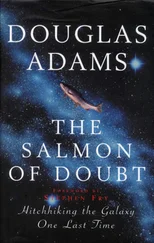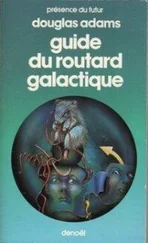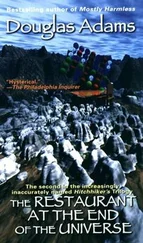Douglas Adams - Last chance to see
Здесь есть возможность читать онлайн «Douglas Adams - Last chance to see» весь текст электронной книги совершенно бесплатно (целиком полную версию без сокращений). В некоторых случаях можно слушать аудио, скачать через торрент в формате fb2 и присутствует краткое содержание. Жанр: Фантастика и фэнтези, на английском языке. Описание произведения, (предисловие) а так же отзывы посетителей доступны на портале библиотеки ЛибКат.
- Название:Last chance to see
- Автор:
- Жанр:
- Год:неизвестен
- ISBN:нет данных
- Рейтинг книги:5 / 5. Голосов: 1
-
Избранное:Добавить в избранное
- Отзывы:
-
Ваша оценка:
- 100
- 1
- 2
- 3
- 4
- 5
Last chance to see: краткое содержание, описание и аннотация
Предлагаем к чтению аннотацию, описание, краткое содержание или предисловие (зависит от того, что написал сам автор книги «Last chance to see»). Если вы не нашли необходимую информацию о книге — напишите в комментариях, мы постараемся отыскать её.
Last chance to see — читать онлайн бесплатно полную книгу (весь текст) целиком
Ниже представлен текст книги, разбитый по страницам. Система сохранения места последней прочитанной страницы, позволяет с удобством читать онлайн бесплатно книгу «Last chance to see», без необходимости каждый раз заново искать на чём Вы остановились. Поставьте закладку, и сможете в любой момент перейти на страницу, на которой закончили чтение.
Интервал:
Закладка:
`Or the kakapo may simply have died of old age. We don't know how long they live, though it seems that it might be a long time. Maybe as long as humans. Either way, the kakapo's not here any more, I think we can be quite sure of that. There are now no kakapos left in all of Fiordland.'
He takes the potato back from me, nevertheless, and with a last gesture of hopeless optimism puts it carefully back on the edge of the bowl.
Until relatively recently - in the evolutionary scale of things - the wildlife of New Zealand consisted of almost nothing but birds. Only birds could reach the place. The ancestors of many of the birds that are now natives of New Zealand originally flew there. There was also a couple of species of bats, which are mammals, but - and this is the point - there were no predators. No dogs, no cats, no ferrets or weasels, nothing that the birds needed to escape from particularly.
And flight, of course, is a means of escape. It's a survival mechanism, and one that the birds of New Zealand found they didn't especially need. Flying is hard work and consumes a lot of energy.
Not only that. There is also a trade off between flying and eating. The more you eat the harder it is to fly. So increasingly what happened was that instead of having just a light snack and then flying off, the birds would settle in for a rather larger meal and go for a waddle afterwards instead.
So when eventually European settlers arrived and brought cats and dogs and stoats and possums with them, a lot of New Zealand's flightless birds were suddenly waddling for their lives. The kiwis, the takahes - and the old night parrots, the kakapos.
Of these the kakapo is the strangest. Well, I suppose the penguin is a pretty peculiar kind of creature when you think about it, but it's quite a robust kind of peculiarness, and the bird is perfectly well adapted to the world in which it finds itself, in a way that the kakapo is not. The kakapo is a bird out of time. If you look one in its large, round, greeny-brown face, it has a look of serenely innocent incomprehension that makes you want to hug it and tell it that everything will be all right, though you know that it probably will not be.
It is an extremely fat bird. A good-sized adult will weigh about six or seven pounds, and its wings are just about good for waggling a bit if it thinks it's about to trip over something - but flying is completely out of the question. Sadly, however, it seems that not only has the kakapo forgotten how to fly, but it has also forgotten that it has forgotten how to fly. Apparently a seriously worried kakapo will sometimes run up a tree and jump out of it, whereupon it flies like a brick and lands in a graceless heap on the ground.
By and large, though, the kakapo has never learnt to worry. It's never had anything much to worry about.
Most birds, faced with a predator, will at least realise that something's up and make a bolt for safety, even if it means abandoning any eggs or chicks in its nest - but not the kakapo. Its reaction when confronted with a predator is that it simply doesn't know what the form is. It has no conception of the idea that anything could possibly want to hurt it, so it tends just to sit on its nest in a state of complete confusion and leaves the other animal to make the next move - which is usually a fairly swift and final one.
it's frustrating to think of the difference that language would make. The millennia crawl by pretty bloody slowly while natural selection sifts its way obliviously through generation after generation, favouring the odd aberrant kakapo that's a little twitchier than its contemporaries till the species as a whole finally gets the idea. It would all be cut short in a moment if one of them could say, 'When you see one of those things with whiskers and little bitey teeth, run like hell.' On the other hand, human beings, who are almost unique in having the ability to learn from the experience of others, are also remarkable for their apparent disinclination to do so.
The trouble is that this predator business has all happened rather suddenly in New Zealand, and by the time nature starts to select in favour of slightly more nervous and fleet-footed kakapos, there won't be any left at all, unless deliberate human intervention can protect them from what they can't deal with themselves. It would help if there were plenty of them being born, but this brings us on to more problems. The kakapo is a solitary creature: it doesn't like other animals. It doesn't even like the company of other kakapos. One conservation worker we met said he sometimes wondered if the mating call of the male didn't actively repel the female, which is the sort of biological absurdity you otherwise only find in discotheques. The ways in which it goes about mating are wonderfully bizarre, extraordinarily long drawn out and almost totally ineffective.
Here's what they do:
The male kakapo builds himself a track and bowl system, which is simply a roughly dug shallow depression in the earth, with one or two pathways leading through the undergrowth towards it. The only thing that distinguishes the tracks from those that would be made by any other animal blundering its way about is that the vegetation on either side of them is rather precisely clipped.
The kakapo is looking for good acoustics when he does this, so the track and bowl system will often be sited against a rock facing out across a valley, and when the mating season arrives he sits in his bowl and booms.
This is an extraordinary performance. He puffs out two enormous air sacs on either side of his chest, sinks his head down into them and starts to make what he feels are sexy grunting noises. These noises gradually descend in pitch, resonate in his two air sacs and reverberate through the night air, filling the valleys for miles around with the eerie sound of an immense heart beating in the night.
The booming noise is deep, very deep, just on. the threshold of what you can actually hear and what you can feel. This means that it carries for a very great distances, but that you can't tell where it's coming from. If you're familiar with certain types of stereo set-up, you'll know that you can get an additional speaker called a sub-woofer which carries only the bass frequencies and which you can, in theory, stick anywhere in the room, even behind the sofa. The principle is the same - you can't tell where the bass sound is coming from.
The female kakapo can't tell where the booming is coming from either, which is something of a shortcoming in a mating call. `Come and get me!' `Where are you?? 'Come and get me!' 'Where the hell are you?' `Come and get me!' `Look, do you want me to come or not?' `Come and get me!' 'Oh, for heaven's sake.' `Come and get me!' 'Go and stuff yourself,' is roughly how it would go in human terms.
As it happens the male has a wide variety of other noises it can make as well, but we don't know what they're all for. Well, I only know what I'm told, of course, but zoologists who've studied the bird for years say they don't know what it's all in aid of. The noises include a high frequency, metallic, nasal 'ching' noise, humming, bill-clicking, 'scrarking' (scrarking is simply what it sounds like - the bird goes 'scrark' a lot), `screech-crowing', pig-like grunts and squeals, duck-like `warks' and donkey-like braying. There are also the distress calls that the young make when they trip over something or fall out of trees, and these make up yet another wide range of long-drawn-out, vibrant, complaining croaks.
I've heard a tape of collected kakapo noises, and it's almost impossible to believe that it all just comes from a bird, or indeed any kind of animal. Pink Floyd studio out-takes perhaps, but not a parrot.
Some of these other noises get heard in the later stages of courtship. The chinging for instance, which doesn't carry so well, is very directional and can help any females that have been aroused by night after night of booming (it sometimes goes on for seven hours a night for up to three months) to find a mate. This doesn't always work, though. Females in breeding condition have been known to turn up at completely unoccupied bowls, wait around for a while, and then go away again.
Читать дальшеИнтервал:
Закладка:
Похожие книги на «Last chance to see»
Представляем Вашему вниманию похожие книги на «Last chance to see» списком для выбора. Мы отобрали схожую по названию и смыслу литературу в надежде предоставить читателям больше вариантов отыскать новые, интересные, ещё непрочитанные произведения.
Обсуждение, отзывы о книге «Last chance to see» и просто собственные мнения читателей. Оставьте ваши комментарии, напишите, что Вы думаете о произведении, его смысле или главных героях. Укажите что конкретно понравилось, а что нет, и почему Вы так считаете.







